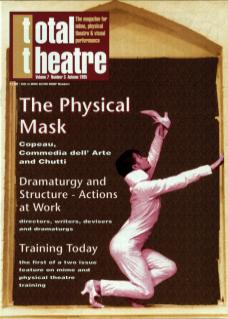'I envisage the following as part of a dialogue, provoking wry smiles, a ripple across the pond of thoughts, a spectrum of responses and observations.' – John Keefe
1. Dramaturgy is a science (from 'wissenschaft'; of knowledge). It is the science or knowledge of theatre, performance and the stage. Science not only as theory but also as craft and vision.
2. The dramaturg sits quietly, looking and listening with knowledge. Sometimes with pencil in hand, sometimes without; always noting what is seen and heard. Always part of the process.
3. Theatre practice is framed and grounded in common and universal principles of art: perspective, balance, movement, rhythm, mass, weight, colour, sound, chaos, order, structure, space, play. Each individual work rests on and is informed by these principles.
4. Theatre sits between the lasting and the ephemeral, the real and the surreal, the rational and the irrational; it reveals the shadow between the mythic and the everyday, play and caprice.
5. The dramaturg draws on the universal, the mythic, the archetypal, the erotic to look at each work for itself and the principles on which it rests through his/her own evolving processes, vocabularies and biases.
6. The dramaturg does not perform or usurp the function of the writer or director (although looks with the eye of both) but is the first spectator. He/she though is not the ‘outside eye’ nor can the look be ‘pure’; the dramaturg cannot escape his/her own biases and should not seek to.
7. A dramaturgy of this kind rests on the practice and application of Verfremdung (after Brecht and Schiller); looking and acting with the engaged detachment and the passionate thinking to render the familiar strange and the strange familiar; to be within and of the creative process yet estranged from it; to best serve it as a friend to the work. To have a 'Brechtian' cast of mind that looks directly yet obliquely, seeing the same piece as it changes phase by phase.
8. If what is performed is, in some respects, only an echo of the original impulse and intention, then it is an echo with its own substance. The echo is the work in so far as it is the work as seen, with its own richness and complexity, whilst remaining the child of the original impulse. The dramaturg ‘guards’ the first ideas as touchstones for the evolving work, giving visibility to the echo.
9. Clearly, if the dramaturg looks and acts with knowledge then this is always being accumulated from all fields, experiences and forms. The dramaturg is a store of facts and connections; instinctive or half remembered things that are jogged into life by what is seen and heard. Dramaturgy is the wooden drawer with brass handles found in the hardware store of my childhood; the dramaturg opens each drawer to reveal new objects of indeterminate but indispensable use.
10. The dramaturg sees the poetry of theatre; thinks with feeling and feels with reason with the awareness that both the intellect and the emotions can become seduced or seducer.
11. The dramaturg has concern for the 'mise-en-scene' (the image, the score, the recit) and for language as the articulation of ideas, has concern for what may go beyond words yet must be brought into the dialogue of text, rhythm and image.
12. The dramaturg is a catalyst. ‘Be for what you are against and against what you are for’ (after Étienne Decroux).
© John Keefe Taken from an article originally published alongside the reprint of M. van Kerkhoven's text in the EMF journal States of Mime, July 1995. The concepts of Verfremdung / Gesture / Gestus will be developed as part of a paper on dramaturgy and transversality to be given by John Keefe at a symposium entitled Artistic Boundaries Crossed in Amsterdam as part of the Amsterdam Summer University in September 1995.

